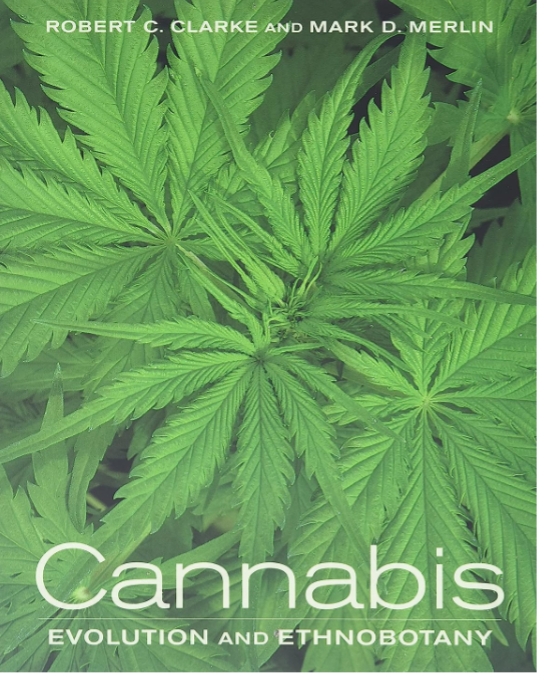
“Cannabis: Evolution and Ethnobotany” by Robert Clarke and Mark Merlin is an expansive and interdisciplinary exploration of the natural origins and early development of this renowned plant. Delving into its historical significance and the profound impact it has had on human societies, the book provides a comprehensive account of cannabis and its diverse uses.
The authors meticulously examine the various aspects of cannabis, from the durable fiber in its stalks to its oil-rich seeds and the psychoactive and medicinal compounds found in its female flowers. Throughout history, these valuable goods derived from cannabis have played a pivotal role in shaping commercial, medical, ritual, and religious practices across cultures, driving the evolution of the plant itself.
Clarke and Merlin offer insights into the historical usage of cannabis for textiles and its migration over millennia. While some sections may be more detailed than others, the book is replete with valuable findings and intriguing discoveries.
The book also sheds light on why humanity continues to depend on cannabis and adapt it to meet our needs. As public interest in cannabis grows and discussions surrounding its myriad uses become more prevalent, this comprehensive resource provides a valuable understanding of its deep-rooted significance in human life.
The authors explore the natural growing conditions of cannabis, highlighting its affinity for exposed riverbanks, lakesides, and agricultural lands that offer ample sunlight and well-drained, nutritious soil. They also delve into the composition of cannabis, revealing that naturally grown plants possess a balanced ratio of CBD and THC. This balanced distribution, which follows a normal distribution curve, contrasts with contemporary varieties that exhibit significantly higher levels of either CBD or THC.
The book delves into the psychoactive properties of cannabis, explaining that the primary psychoactive compound is THC, specifically in its non-psychoactive form known as THCA. To activate its psychoactive effects, cannabis must be heated through decarboxylation, removing the carboxylic acid side chain. For those interested in understanding how the method of ingestion affects the plant’s effects, the authors provide references to additional sources that explore this topic in detail.
Another treat from the book is a captivating journey through the history of the plant. The authors trace its origins millions of years ago in northern Eurasia, speculating that the migration of cannabis southwards during glaciations led to its diversification into indica and sativa strains. They highlight the role of cannabis in the evolution of human cognitive abilities, positing that the ancient mutation resulting in the CB1 receptor, followed by prolonged exposure to THC, may have contributed to the acceleration of human mental powers.
The book intriguingly suggests that cannabis may have played a pivotal role in the development of human cognition at the dawn of agriculture. Carl Sagan’s theorized that cannabis was the only cultivated crop of the Pygmies, suggesting that its use may have influenced the development of our cannabinoid receptors. The authors also present the possibility that early humans first gathered cannabis seeds and later discovered the psychotropic effects by scraping resin from their fingers with their teeth.
In exploring recent history, the authors tell of travelers to India in the 1800s that using cannabis (bhang) had no severe consequences compared to the potential death penalty for drinking liquor. They also touch upon the contemporary (at the time of writing in 2016) state of cannabis cultivation, highlighting the limited number of farmers consciously improving their crops through selection and breeding.
Overall, “Cannabis: Evolution and Ethnobotany” is an insightful and informative book that serves as an excellent resource for those seeking a deeper understanding of the historical significance and evolution of cannabis. Clarke and Merlin’s thorough research makes this book a valuable addition to the field of cannabis studies. A recommended read for those who want to dig deep into this versatile plant, and a source of reference for anyone wanting to write or speak intelligently on the place of cannabis in human history and society.

